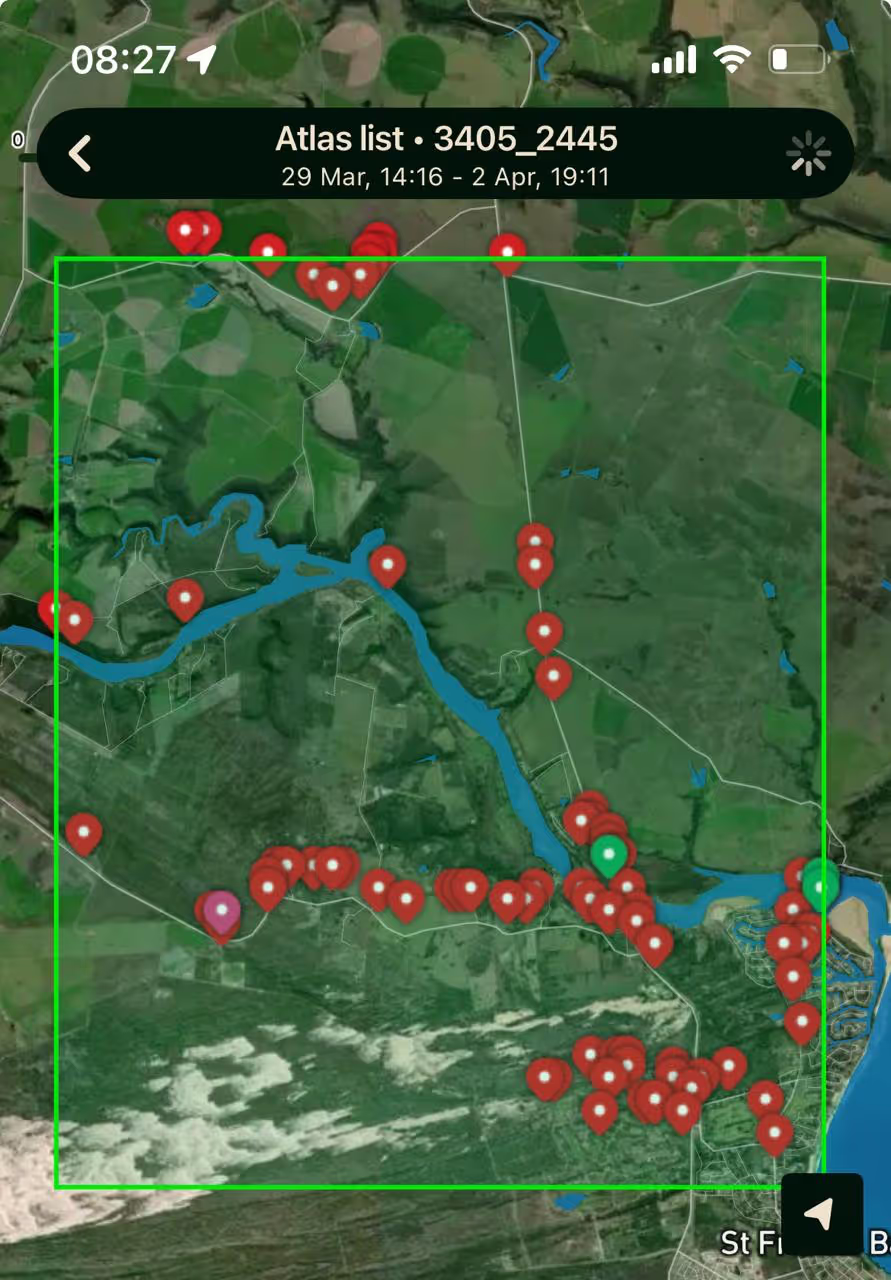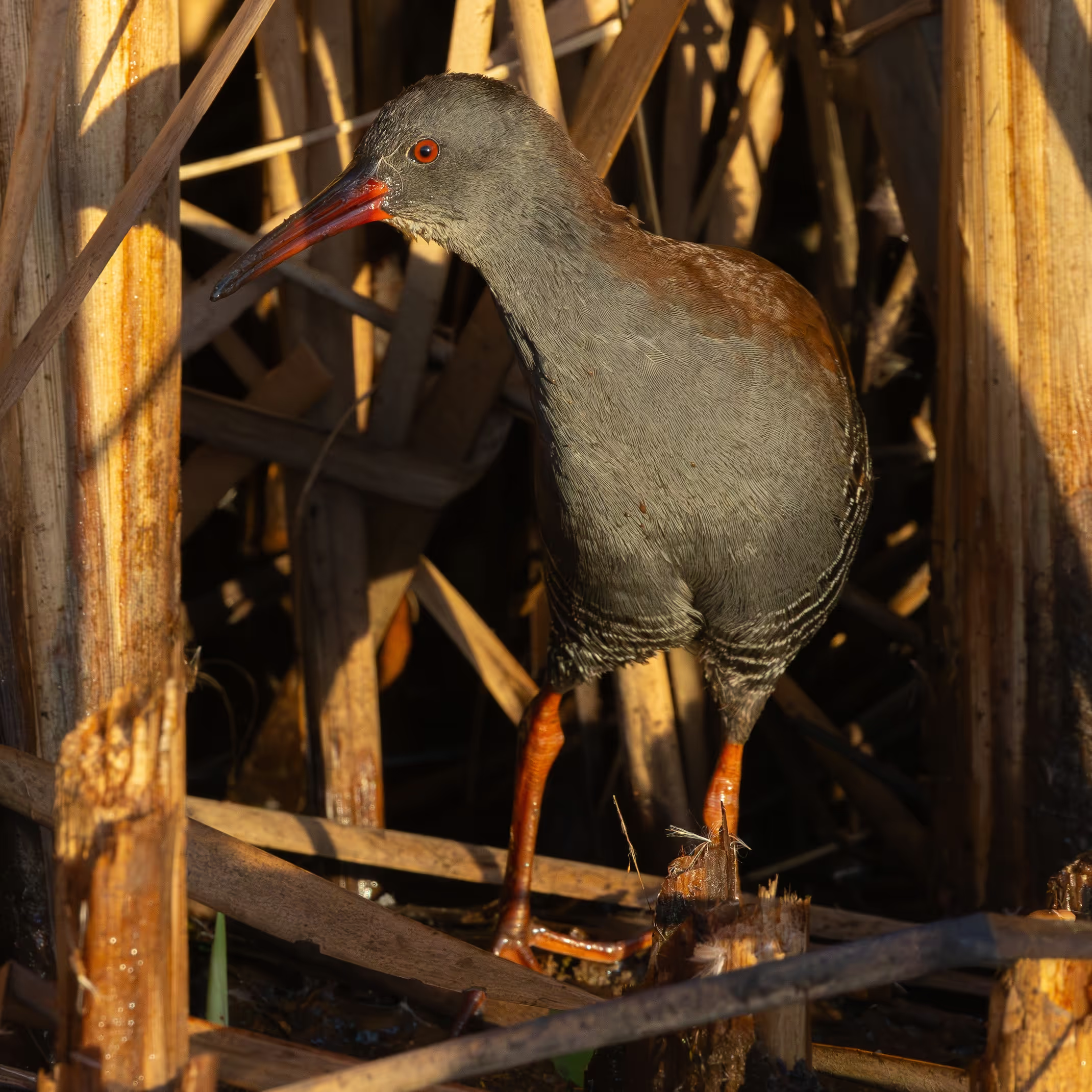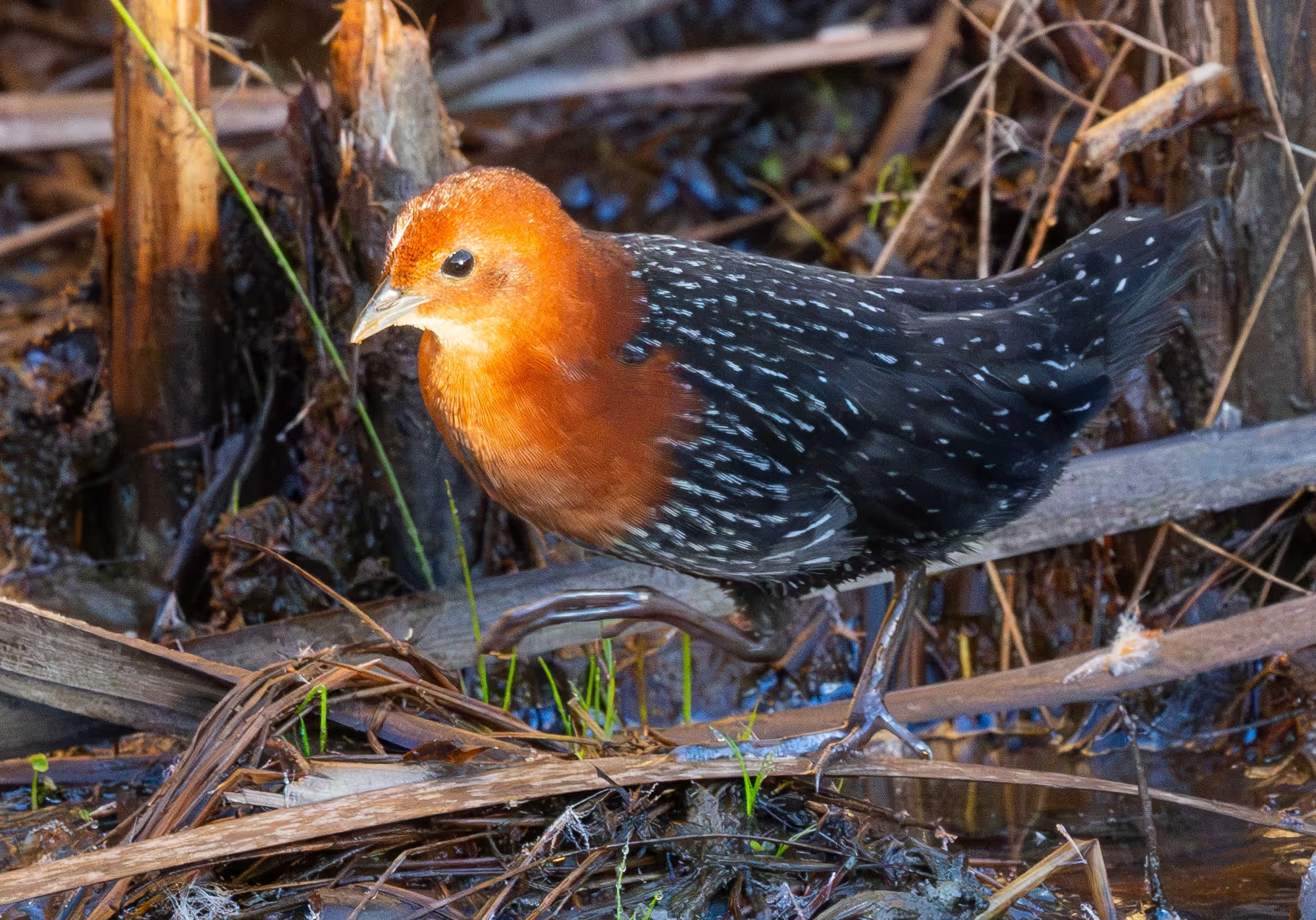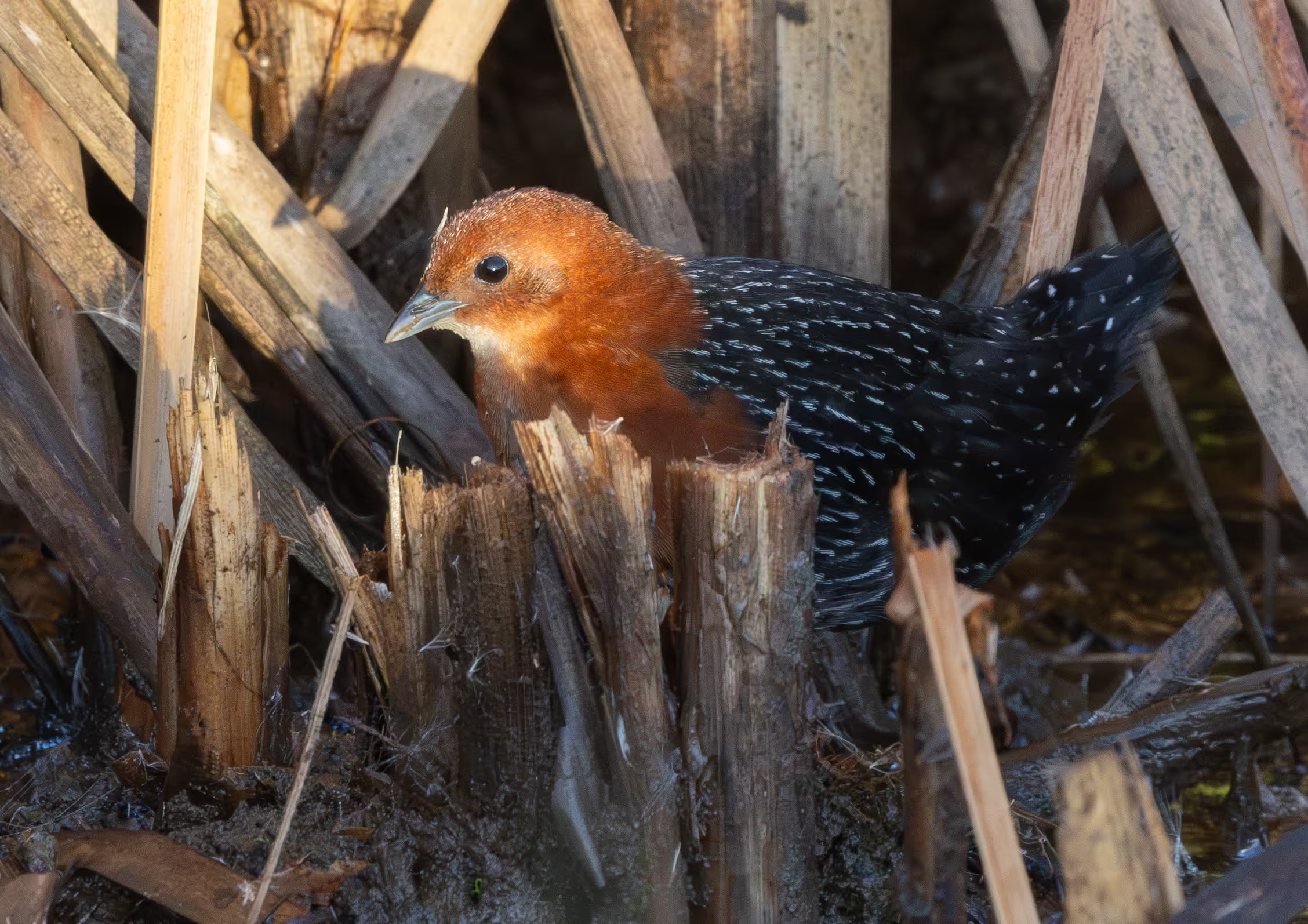A glut of Rallids in St Francis Bay
.avif)
As we wind down from summer into winter here in the south, the birding seems to be a little quieter, but Adam and I were still excited about a week in St Francis Bay over the school and varsity holidays to spend some time in our favourite pentad – what we call the Kromme River pentad (3405_2445).
I have personally submitted 55 full protocol cards for the pentad and with a species list of close to 300 species, it is a very rewarding one to spend some time in. It stretches from the Kromme Estuary westwards up the Kromme River, surrounded by salt marsh, riverine thicket, farmland and grassland, with the occasional productive farm dam.

During our week in St Francis I completed two full protocol cards and amazingly managed to add five new bird species to my pentad list, lifting it from 256 species to 261. One of those was a new record for the pentad, being a vocal Baillon’s Crake in a small wetland (see lower down for more).But, it wasn’t a new bird for the pentad that was my personal highlight. It was something we’d seen before but many years ago.
In December, when Adam and I were birding the farmlands close to the wind farm on the way to Oyster Bay, we stopped at a small reed-filled wetland near the road to observe an African Marsh Harrier hunting low over the reeds. The moment we stopped, we immediately heard the pulsing hoot of a Red-chested Flufftail. It was near the end of our holiday and the margins of the reedbed looked too thick, so we were satisfied with a “heard only” record and moved on. It was a great bird for the pentad, but we’d have to leave it for another day to try for a sighting.
When we arrived last week in St Francis, two of my good birding mates, Pete and Stu were also in town, and I suggested we make our first stop at the wetland to see if we could hear the flufftails. It would be a lifer for them but, knowing flufftails, the expectations were severely moderated. Many a South African birder has been thwarted by these tiny rallids.
We jumped into the car early on our first morning, opened a Bindo collaborative list and the four of us headed to the wetland. The first thing we noticed was that the farmer using the access road that passes right next to the wetland had cleared some of the reedbed to prevent the flooding of the road where a concrete culvert had been blocked. The cleared section was a good omen – it seemed as if it had been cleared just for us - giving us the best chance for a visual of these incredibly sneaky birds.
The first bird we heard was not the flufftail. It was a very loud African Rail, just behind the curtain of reeds beyond the small little mud patch. It shyly ventured very briefly into the open, gave a quick photo opportunity and then disappeared again. It was a lifer for Pete and a new pentad bird for me.

And then, on cue, once we’d settled from the excitement of the African Rail, a Red-chested Flufftail started calling from a position even closer than the rail. It hooted excitedly for over 20 seconds to the right of the mudflat, and it was immediately joined by a competing bird on the left-hand side of the clearing.
We now had two virile male flufftails calling on either side of us, which seemed like a perfect situation. It didn’t take long before the right-hand male ventured out into the open and made its way across the clearing, most likely to investigate the competitor on the other side.
Over the next half hour, it passed through a few times giving Stu and Pete their first ever flufftail sightings. It also gave me an opportunity to capture my best ever images of this incredibly special bird, with the morning sun rising behind us and lighting the bird up more than one would usually expect.


To add to the rallid frenzy we had an obliging Black Crake wander into the clearing, and then the Baillon’s Crake called from the reeds but unfortunately never showed for us.
In addition to the two pentad cards which were captured and submitted on Bindo’s atlassing functionality I also managed to add two new species to my “Greater St Francis” Bindo Area. The African Rail and a pair of displaying Brown-backed Honeybirds at the wetland lifted my total from 289 to 291 species. It is an incredibly diverse birding area and despite the shorter days and lower bird activity, there were still some nice surprises.
For interest, the Bindo checklist can be found here: Bindo Checklist
Mike
